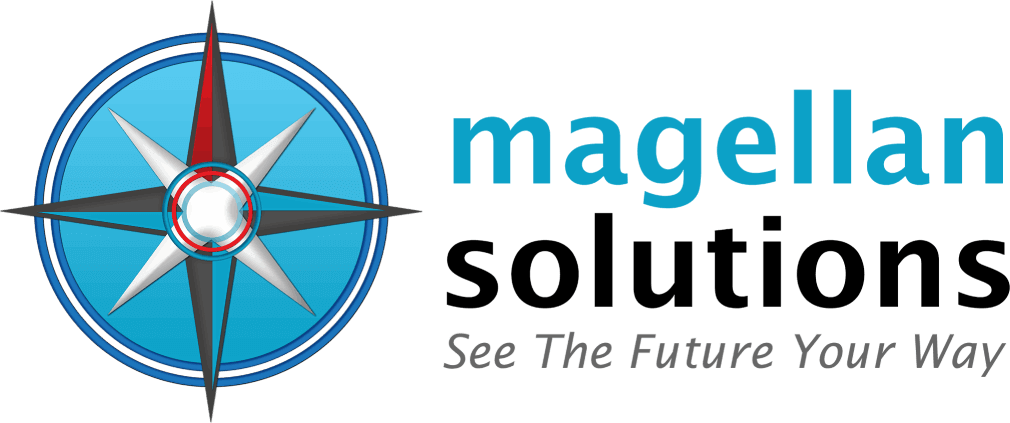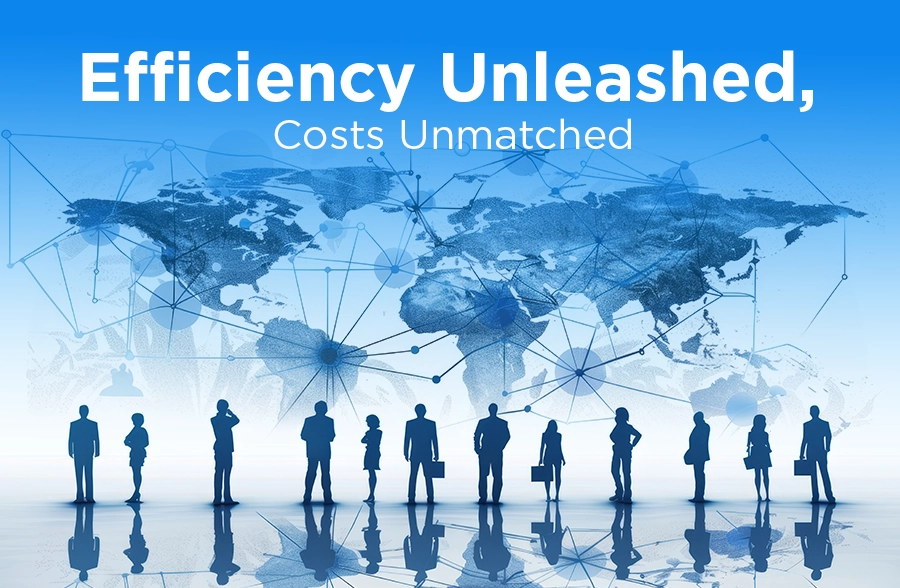Home | Studies | Call Center Benchmarking Report
Call Center Benchmarking Report

BPO Industries In The Philippines:
The BPO sector has gone beyond traditional voice calls and now encompasses a wide range of services. These are:
- Human Resources
- Payroll Benefits Processing
- Training and Development
- Hiring and Staffing
- Management
- Banking and Finance
- Consumer Services
- Commercial Services
- Loan Administration
- Credit/Debit Card Services
- Check Processing
- Collection Services
- Logistics
- Inventory and Warehousing
- Industry Management
- Order Fulfillment/Procurement
- Transportation and Distribution
- Health Information Services
- Medical Transcription
- Health Insurance Processes
- Care Services
- Diagnostic Reading Services
- Sales, Marketing, and Customer Care
- Customer Service
- Customer Analysis
- Contact Centers
- Consumer Information Services
- Help Desk
- Technical Support
- Accounting Services
- Document Management
- Billing
- Claims Processing
- Accounts Receivable
- General Liaison
- Shareholder Services
- Other BPO Niches
- Animation
- Engineering Design Services
- Architecture Drafting Services
- Legal Support Services
- Airline Ticketing and Travel
- Content Moderation
Job Growth Rates
- There are currently 1.15 million call center employees. It is expected to grow and reach 1.8 million by 2022.
- It is due to more efficient recruitment and hiring techniques
- The workforce sourcing portfolio has likewise diversified into non-traditional jobs such as social media specialists.
Number Of Contact Centers
According to the Philippine Economic Zone Authority (PEZA), there are 788 BPO companies composed of large businesses and SMEs.
Global Market Growth
- With the global market expected to grow by roughly 10-15 percent ($250 billion) within the next few years, the Philippine call centers are likewise seen to grow with it.
- In 2016, the Philippines accounted for 12.7 percent of the $22.9 billion total worldwide revenue.
- This figure is seen to grow even further—to $38.9 billion—in 2022. As for the Philippines, even if all goes according to plan, it will take up around 15.5 percent of this total figure.
Breakdown Of FTE By Geography Looks Something Like
- North America (US and Canada) 77%
- Europe (UK) 9%
- Australia and New Zealand 9%
- Japan (5%)
Market Profile
While contact centers or voice services comprise the biggest slice of the BPO “pie” with 69 percent, the other sectors aren’t far behind.
- Finance (15%)
- HR (5%)
- Procurement (3%)
- Engineering (2%)
- Others (6%)
Markets Serviced
The US and Asia (Asia-Pacific) remain the top markets many BPOs cater to. However, Europe, specifically the UK, is now considered a new and emerging market.
Languages Spoken And Required
- American English: (75.2%)
- UK English (14%)
- Australian English (8.2%)
- Asian – Japanese (1.7%)
- European (0.2%)

Opening Days
Nearly half of the contact centers in the Philippines operate seven days per week, and 31 percent operate 24 hours a day, seven days per week. Statistically, a significantly higher proportion of contact centers with 20 seats or more are open seven days per week. There is also a statistically significantly higher proportion of outsourced contact centers open seven days per week and 24/7.
Budget and Costs
Budget Allocations
On average, 46 percent of the total contact center budget in the Philippines is allocated to labor-related expenses. Twenty percent of the budget is allocated to technology expenses and 19 percent to telecommunications.
Cost per seat and optimized cost per transaction
In the Philippines, the annual cost per seat is US$18,086. The hourly cost per seat is US$4.83, and the cost per transaction is US$0.40. Please note that these calculations are based on one seat operating 12 hours a day, six days a week (3,744 hours per year). The seat handles 12 contacts per hour (44,928 contacts per annum), with an average call duration of 3 minutes and an average wrap time of 1 minute. The occupancy rate of this seat is averaged at 80%. Given these conditions, the transaction cost estimates what an optimally performing contact center should cost.
Contact Handling
Customer contacts per channel
Over half of all contacts are handled over the phone. There is a statistically significantly higher proportion of outsourced contact centers that handle customer contact over the phone by the contact center and a statistically significantly higher proportion of in-house contact centers that handle customer contact through the branch/retail network and sales force.
Primary Activity at Contact Center
The primary activity of over half of contact centers in the Philippines is providing customer service/support, pegged at roughly 52 percent.
Mean Weekly Transaction Volume per Center
Each contact center handles an average of 160,399 transactions per week
Channel Volumes
The share of transactions through each channel shows a high reliance on agents. Agents handle 49 percent of all transactions that come through the contact center with no automation, plus an additional 18 percent of transactions after the IVR has handled some functions.
Contact Center Transactions
There is a statistically significantly higher proportion of outsourced contact centers handling transactions by phone (agent after IVR).
Inbound and Outbound Percent of Total Calls
Sixty-six percent of calls handled by contact centers in the Philippines are inbound.
Agent Call Handling
No. of calls per agent per shift: Philippine inbound, outbound, and blended agents all handle between 60 and 70 calls per shift per day. Inbound-only agents in outsourced contact centers handle significantly more calls than in-house ones.
Percentage of Contact Centers that Report Up or Cross-Selling Opportunities from Inbound Calls
71 percent of contact centers in the Philippines report opportunities to upsell or cross-sell from inbound calls.
Mean Percentage of Total Inbound Calls that Present an Up or Cross-Selling Opportunity
Of those contact centers in the Philippines that report opportunities to upsell or cross-sell from total inbound, 52 percent of all inbound calls present an opportunity to upsell or cross-sell.

Human Resources
Agent gender and age
Agent gender in contact centers in the Philippines is fairly evenly split. Forty-two percent are male, and 58 percent are female. Agents in the Philippines are predominantly aged between 18 and 34 years.
Staff salary
Full-time agents in the Philippines are paid an average of PHP 164,848 per year, with a median of PHP 150,000. Part-time agents are paid, on average, PHP 69 per hour, with a median of PHP 45. The average annual salary for a contact center manager is PHP 475,878 (median = PHP 420,000). Team leaders/supervisors receive an average of PHP 269,296 per year (median = PHP 240,000).
Staff ratios
In the Philippines, the ratio of the center manager/supervisor to the agent is 1:8.
Agent training
Recruits in the Philippines receive, on average, 20 days of training before starting work in the contact center. Experienced agents receive, on average, seven days of external/internal classroom training per year. On average, experienced agents receive ten days of on-the-job training per year and five days of e-learning training per year. New contact center recruiters with 100+ seats receive a statistically significantly higher number of external/internal classroom training days. Experienced agents in contact centers with 100+ seats receive statistically significantly higher external/internal classroom training days. Experienced agents in outsourced contact centers receive statistically significantly higher external/internal classroom training days.
Agent telework and sick leave
Six percent of all contact centers allow their agents to telework. On average, 1 percent of agents work in centers that will enable agents to telework. Each agent takes approximately 11 days of sick leave in the Philippines annually.
Staff attrition and tenure
In the Philippines, the mean attrition rate of full-time agents is 18%. The mean attrition rate of part-time agents is 24 percent. There is a statistically significantly higher proportion of in-house contact centers with no (0 percent) full-time or part-time agent attrition. There is a statistically significantly higher proportion of contact centers with less than 50 seats with no (0 percent) full-time or part-time agent attrition. Fifty-one percent of agents who leave contact centers in the Philippines have done so by resigning. Twenty-three percent of those left transferred to other parts of the business.
One in ten agents who leave is dismissed or retrenched, and one in ten still needs to renew their contract. As a percentage of total attrition, there is a statistically significantly higher proportion of agents in in-house contact centers who resigned and agents who transferred to other parts of the business. A statistically significantly higher proportion of agents did not renew their contracts in outsourced contact centers.
The average tenure of those full-time staff leaving contact centers in the Philippines is 18 months, with an average of 6 months for part-time agents. Team leaders stay for around 1.5 years, and contact center managers stay longer at just under four years. Full-time agents and contact center managers in in-house contact centers have a significantly longer tenure.
Team leaders/supervisors in outsourced contact centers have significantly longer tenures.
Technology
Technology Implemented
The top three most commonly implemented technologies in the Philippines are Automatic Call Distributor (ACD) [60 percent], Customer Relationship Management (CRM) [58%], and Interactive Voice Response (IVR) [40 percent]. Other commonly used technologies include Internet Protocol (IP) Telephony [37 percent], Call Recording System [36 percent], Computer Telephony Integration (CTI) [34 percent], Workforce Management Software [30 percent], and Speech Recognition Software [27 percent]. The large (100+ seats) offshore contact centers in the Philippines appear to be the innovators of the contact center industry in terms of the implementation of technologies. Outsourced contact centers have statistically significantly higher levels of technology adoption.
Technology Purchase
In the Philippines, the annual cost per seat is US$18,086. The hourly cost per seat is US$4.83, and the cost per transaction is US$0.40. Please note that these calculations are based on one seat operating 12 hours a day, six days a week (3,744 hours per year). The seat handles 12 contacts per hour (44,928 contacts per annum), with an average call duration of 3 minutes and an average wrap time of 1 minute. The occupancy rate of this seat is averaged at 80%. Given these conditions, the transaction cost estimates what an optimally performing contact center should cost.
Disaster Recovery Planning
Fifty-eight percent of contact centers in the Philippines have a disaster recovery plan. Forty-two percent do not. There is a statistically significantly higher proportion of contact centers with 100+ seats and outsourced contact centers with a disaster recovery plan.
Key Performance Indicator
- Average Abandonment Rate – 10%
- Average Inbound Talk Time (Seconds) – 329
- First Call Resolution – 73%
- Average Speed of Answer (Seconds) – 26
- Occupancy Rate – 75%
- Average Outbound Talk Time (Seconds) – 300
- Current Service Level Targets 90% calls in 10 sec – 32% 90% calls in 20 sec – 13%80 percent calls in 20 sec – 10 percent. No target—23 percent. The mean percentage of calls answered within the service level target – is 77 percent.
- Call Quality Measures Used: 69 percent of all contact centers use call monitoring by supervisors. Nearly half of all contact centers use Call-Back surveys, and 40 percent use random surveys by agents. 24 percent do not use any call quality measures. There is a statistically significantly higher proportion of contact centers with 100+ seats using quality call measures. A statistically significantly higher proportion of contact centers with less than 100 seats do not use quality call measures. A statistically significantly higher proportion of in-house contact centers do not use quality call measures.
- % of contact centers have quality accreditation: 32 percent have ISO-9000 quality accreditation, 19% have COPC quality accreditation, and 57 percent do not have quality accreditation.
Outsourcing Of Contact Centre Functionality
- 22 percent of organizations currently outsource some of their contact center functionality
- 50 percent of companies currently outsource contact center functionality
- Current Outsource Locations: Of those contact centers in the Philippines presently outsourcing some of their contact center functionality, 70 percent of centers are currently outsourcing to the Philippines. A smaller percentage also outsources to other countries.
- Organizations Planning to Outsource Any/Any Additional Contact Center Functionality in the Next 12 Months: 17 percent of contact centers in the Philippines plan to outsource some contact center functionality within the next 12 months.
- Planned Outsourced Locations: Of those contact centers planning to outsource some contact center functionality in the next 12 months, 75 percent plan to outsource to the Philippines. A smaller percentage also plans to outsource to several other countries.
Management Challenges
Significant Challenges Facing Contact Centers in the Next 12 Months: Respondents in the Philippines believe that the top three major challenges facing contact centers over the next 12 months are human recruitment, cost, and marketing.

Related Articles
Contact us today for a free 60-min consultation
Thinking about outsourcing? Send us a message for a free 60-min consultation.
We'll read it and set up a call ASAP!
You can also contact our numbers:
Toll Free: 1 800 371 6224
US: +1 650 204 3191
UK: +44 8082 803 175
AU: +61 1800 247 724












